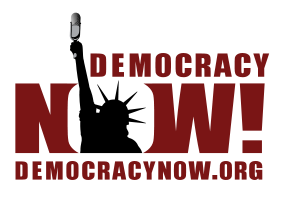Umbrella Revolution
http://www.democracynow.org/2014/9/30/umbrella_revolution_hong_kongs_biggest_protests
Umbrella Revolution: Hong Kong’s Biggest Protests in Decades Challenge China on Political Freedom
Umbrella Revolution
Hong Kong is facing its biggest political unrest in decades as tens of thousands of protesters defy a police crackdown to demand greater freedom from China. The new round of protests began last week when thousands of college students launched a boycott to oppose China’s rejection of free elections in 2017. The protesters want an open vote, but China’s plan would only allow candidates approved by Beijing. After a three-day sit-in, police used tear gas and pepper spray to disperse the crowds. But that only fueled a public outcry which brought even more into the streets, with estimates reaching up to 200,000 people. Protest leaders have vowed to remain until the resignation of Hong Kong city leader, Leung Chun-ying, and a free vote for his successor. Originally organized by the group “Occupy Central,” the protests have been dubbed Umbrella Revolution, for the umbrellas protesters have used to hide from the tear gas. The police crackdown is the harshest since China retook control of Hong Kong in 1997 after 150 years of British rule. The crackdown is being felt in mainland China, where the government has blocked the mobile photo-sharing app Instagram and heavily censored references to Hong Kong on social media. We are joined from Hong Kong by journalist Tom Gundy, who has been covering the protests.
From Pacifica, this is Democracy Now!
I was there when they started the first tear gas. We were harmless people. You see here we’re using umbrellas to come and protect themselves.
AARON MATÉ: We begin in Hong Kong, which faces its biggest political unrest in decades. Tens of thousands of protesters are in the streets defying a police crackdown on their pro-democracy movement. This new round of protests began last week, when thousands of college students launched a boycott to oppose China’s rejection of free elections in 2017. The protesters want an open vote, but China’s plan would only allow candidates approved by Beijing. After a three-day sit-in, police used tear gas and pepper spray to disperse the crowds. But that only fueled a public outcry which brought even more into the streets, with estimates reaching up to 200,000 people. The mood turned festive on Monday, with the scene of a massive street party taking over key parts of the Central business district. The government claims it’s pulled back riot police and has urged protesters to leave. But on Monday, Hong Kong’s second top local official, Carrie Lam, rejected heeding the protesters’ demands.
CARRIE LAM: I have to stress that it remains our most important objective to achieve universal suffrage in the selection of the chief executive in 2017, and we will work according to that objective. It would not be entirely realistic to expect us to reverse the whole decision of the National People’s Congress Standing Committee.
AMY GOODMAN: Protest leaders have vowed to remain until the resignation of Hong Kong city leader, Leung Chun-ying, and a free vote for his successor. Originally organized by the group “Occupy Central,” the protests have been dubbed Umbrella Revolution, for the umbrellas protesters have used to protect themselves from the tear gas. The police crackdown is the harshest since China retook control of Hong Kong in 1997 after 150 years of British rule. Since then, Hong Kong has operated under different economic and political systems than mainland China as part of a policy known as “one country, two systems.” The crackdown is being felt in mainland China, where the government has blocked the mobile photo-sharing app Instagram and heavily censored references to Hong Kong on social media.


